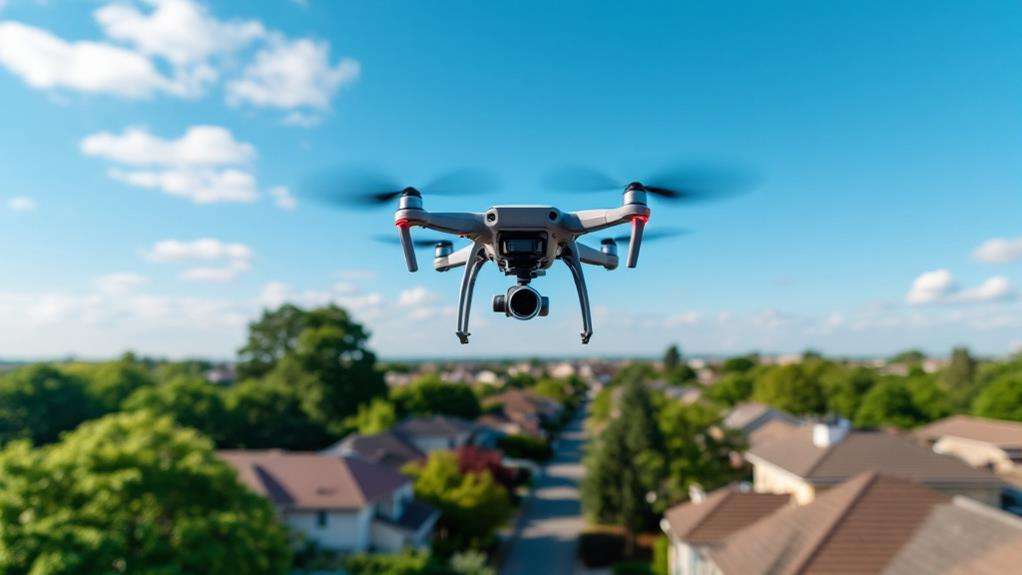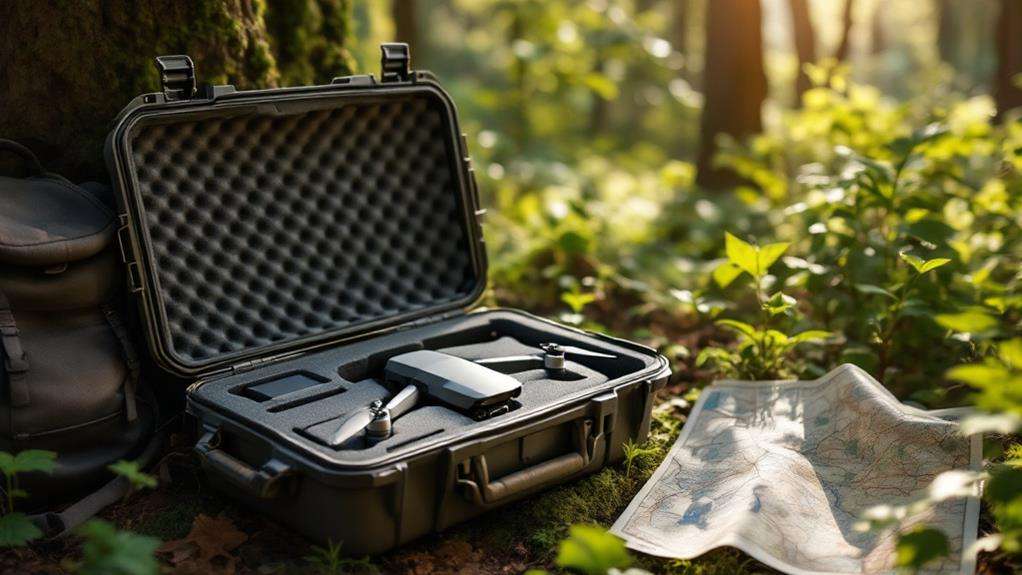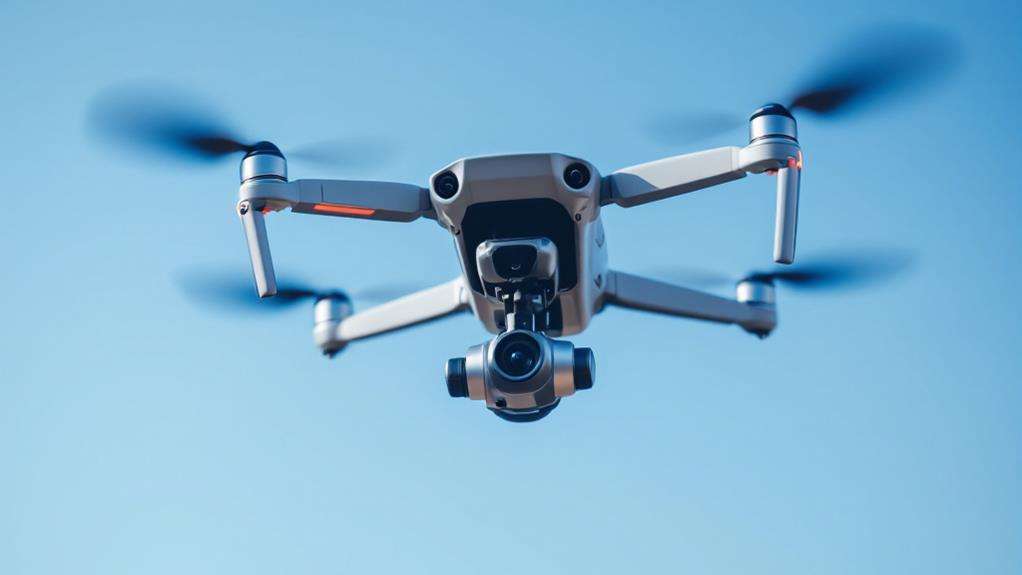How Windy Is Too Windy to Fly a Drone?
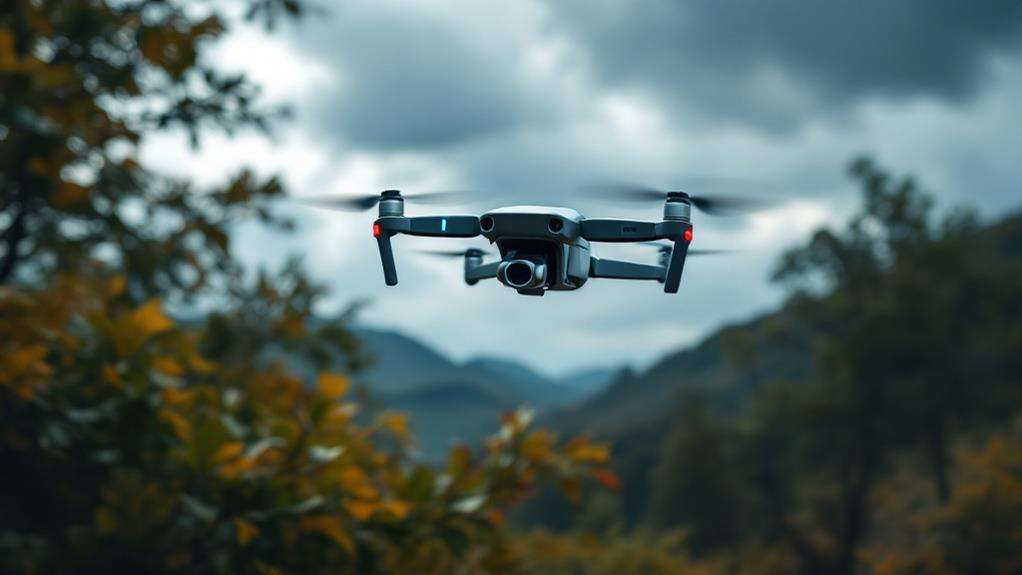
When flying a drone, you should consider avoiding winds over 15 mph, as they can seriously affect control and stability. Most consumer drones, like the DJI Mavic Air 2, handle winds up to 19-24 mph, but sustained winds or gusts over 20 mph can lead to loss of control. Smaller models are particularly vulnerable. Headwinds also increase battery drain. It's crucial to monitor wind speed, direction, and battery levels during flights. Having an abort plan is wise if conditions worsen unexpectedly. There's more to explore about safe flying practices and monitoring tools to enhance your drone flying experiences.
Key Takeaways
- Avoid flying drones when wind speeds exceed 15 mph for safe and stable operation.
- High winds can drain battery faster and compromise drone control, increasing crash risk.
- Drones with level 5 wind resistance handle winds up to 24 mph; avoid exceeding two-thirds of max speed.
- Use tools like the Windy app and handheld anemometers for accurate wind speed assessments before flying.
- Community consensus suggests sustained winds over 10-15 mph are risky; gusts above 20 mph are dangerous.
Understanding Wind Resistance
When it comes to flying drones, understanding wind resistance is crucial for ensuring safe and successful flights. Each drone has a specific wind resistance level, typically rated from 0 to 12, that tells you the maximum wind speed it can safely handle. For instance, the DJI Mavic Air 2 has a wind resistance level of 5, meaning it can withstand maximum wind speeds of 19-24 mph (or approximately 8.5-10.5 m/s). This helps you gauge whether your drone can maintain stability and control when flying in windy conditions. It's important to know these wind resistance levels because flying in windy conditions can significantly impact your drone's performance. If the wind exceeds the maximum wind speed your drone is rated for, you risk losing control or even damaging your equipment. Generally, it's recommended not to fly in winds over 10 m/s (~22 mph). This precaution helps ensure that your drone remains stable and responsive during flight. The Beaufort scale, a handy reference, categorizes wind strengths, advising against flying at levels 8-12 due to high risks. By respecting these guidelines, you can better protect your investment and ensure safe flights.
Determining Safe Wind Speeds
Even though drones are built with varying wind resistance capabilities, determining safe wind speeds is key to ensuring smooth flights. As a drone pilot, understanding your drone's wind speed resistance is crucial. For most consumer drones, the maximum wind resistance typically falls between 19-24 mph (8.5-10.5 m/s). However, for safe and controlled drone flying, it's wise to stay within lower thresholds, especially if you're a beginner. Winds exceeding 10-15 mph can significantly impact performance, making it challenging to maintain stability and control. In addition to wind speed, pilots should consider the importance of precise positioning using GPS to enhance flight stability and safety in windy conditions.
When assessing safe wind speeds, it's essential to consider that sustained winds over 20 mph aren't recommended. Such conditions can compromise your drone's stability, leading to potential accidents or crashes. A general rule of thumb suggests that wind speeds shouldn't exceed two-thirds of your drone's maximum speed. This allows adequate maneuverability and responsiveness, keeping the flight within safe operational limits.
Moreover, you should be wary of gusts, which can be more dangerous than constant winds. These sudden bursts can surpass sustained wind speeds, causing abrupt changes in your drone's behavior. By carefully evaluating wind conditions, you can ensure a safer and more enjoyable drone flying experience.
Effects of Wind on Drones
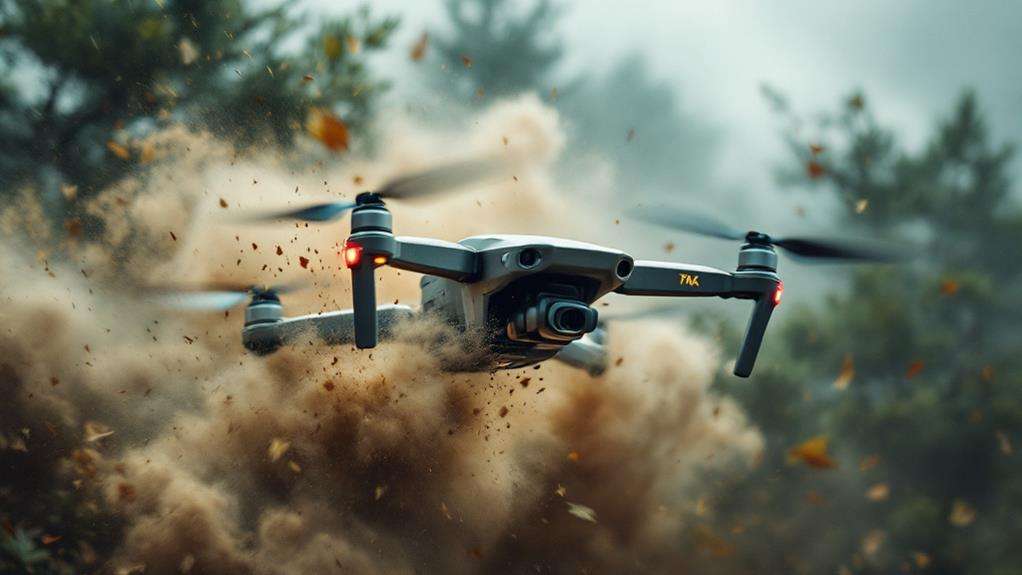
Wind can have a notable impact on a drone's performance, influencing everything from stability to battery life. When you're flying in high wind speeds, your drone's stability can be compromised, making it harder to control, especially if you're using smaller models like the Mini 2. These smaller drones may struggle to maintain stability and control when winds exceed 15 mph, which is why safe flying often requires avoiding gusts over this speed. It's crucial to check the wind conditions before takeoff to ensure your drone remains stable and secure.
Battery life is another critical factor that wind affects. When your drone faces headwinds, it uses more power to maintain its position and speed, resulting in a faster battery drain. If you're not careful, this can cut your flight short, so always keep an eye on your drone's battery levels when flying in windy conditions.
Additionally, while flying vertically might be manageable in higher winds, be cautious with horizontal movements. If wind speeds approach two-thirds of your drone's maximum speed, you might encounter control issues, making safe flying increasingly challenging. Always prioritize stability and battery life for a successful flight.
Wind Resistance Levels and Models
Understanding wind resistance levels is crucial for determining whether your drone can handle the day's conditions. Each drone has a specific rating, from 0 to 12, indicating the maximum safe wind speeds it can manage. For instance, the DJI Mavic Air 2 boasts a wind resistance of 10.5 m/s (about 24 mph), allowing it to handle moderate breezes. However, high winds can be troublesome, especially for models like the DJI Mini 2, which struggles with gusts over 25 mph. Ideally, you want to fly in conditions where the wind speed is below 15 mph to ensure optimal performance and control.
When considering whether to launch your drone, remember that it shouldn't fly in winds exceeding two-thirds of its maximum speed. For example, if your drone's top speed is 36 mph, keep it grounded if the wind exceeds 24 mph. The Beaufort scale can help you gauge the wind strength, with levels 0-1 being perfect for any drone flight. Levels 8-12, however, present significant challenges and increase the risk of losing control. To ensure a safe flight, always check your drone's specifications and the current wind conditions before taking off.
Techniques for Windy Flights

When flying a drone in windy conditions, it's essential to use specific techniques to maintain stability and control. Start your flight facing directly into the wind. This strategy offers enhanced control and makes returning easier if wind conditions change. Continuously monitor the wind speed and direction, as gusts can drastically affect your drone's performance.
Drone pilots can benefit from using the position hold feature or automated landing modes. These features help stabilize the drone against wind disturbances during landing. Engaging sports mode can also improve control and responsiveness when flying in strong winds, but be cautious of the increased speed and longer stopping distances.
| Technique | Benefit | Caution |
|---|---|---|
| Face Into Wind | Enhanced stability and easier return | Requires continuous monitoring |
| Position Hold/Landing | Stabilizes against wind during landings | May not be available on all drones |
| Engage Sports Mode | Better control and responsiveness in turbulent conditions | Increased speed, longer stops |
Always perform pre-flight checks to assess wind conditions and have an abort plan if the winds exceed your drone's safe operating limits. These techniques ensure your drone remains stable, even when you're flying in strong winds.
Wind Monitoring Tools
To confidently fly your drone in windy conditions, you need to rely on effective wind monitoring tools. Start by checking the Windy app, which provides detailed wind forecasts at various altitudes. This feature is invaluable for pre-flight planning, ensuring you're aware of potential challenges before takeoff. Complement this with a handheld anemometer for real-time wind speed readings at your location. This device gives you accurate data, helping assess if it's safe to fly.
Understanding the Beaufort Scale is also crucial. This scale categorizes wind strength from 0 (calm) to 12 (hurricane), offering a clear reference for determining suitable flying conditions. By consulting it, you can quickly gauge whether the current wind conditions fall within your drone's operational limits.
While local weather apps offer general information, always corroborate their data with multiple sources. Ground-level gusts can vary, so it's wise to cross-check information. UAV weather forecasts are specifically designed for drone pilots and often include detailed wind speed and direction, giving you a comprehensive view of flying conditions. By employing these wind monitoring tools, you enhance your ability to make informed and safe flying decisions.
Community Insights and Experiences
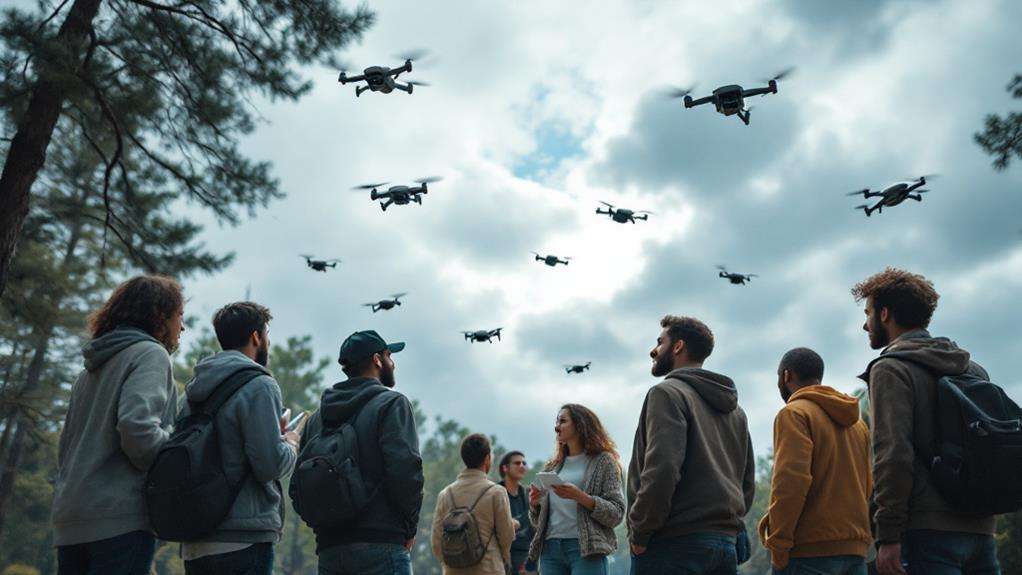
Among drone enthusiasts, there's a common consensus: flying in windy conditions can be tricky and sometimes perilous. Many pilots agree that sustained winds over 10-15 mph pose significant risks, and wind gusts above 20 mph are generally too dangerous for safe operation. It's not uncommon for experienced pilots to test their skills in gusts up to 41 mph, but these conditions often end in loss of control and potential crashes.
Understanding your drone's wind resistance is crucial. For example, the Mini 2 struggles when gusts exceed 25 mph, leading to unpredictable behavior and navigation challenges, especially when you're flying downwind. Community members share that the wind can make drones behave erratically, turning even a simple flight into a stressful experience.
To ensure you stay on the safe side, many pilots recommend using multiple wind assessment tools, like the Windy app and anemometers, to gauge real-time conditions. It's better to be safe than sorry, avoiding flying in strong winds that put your drone at risk. Remember, knowing when not to fly is just as important as mastering the controls when you're in the air.

